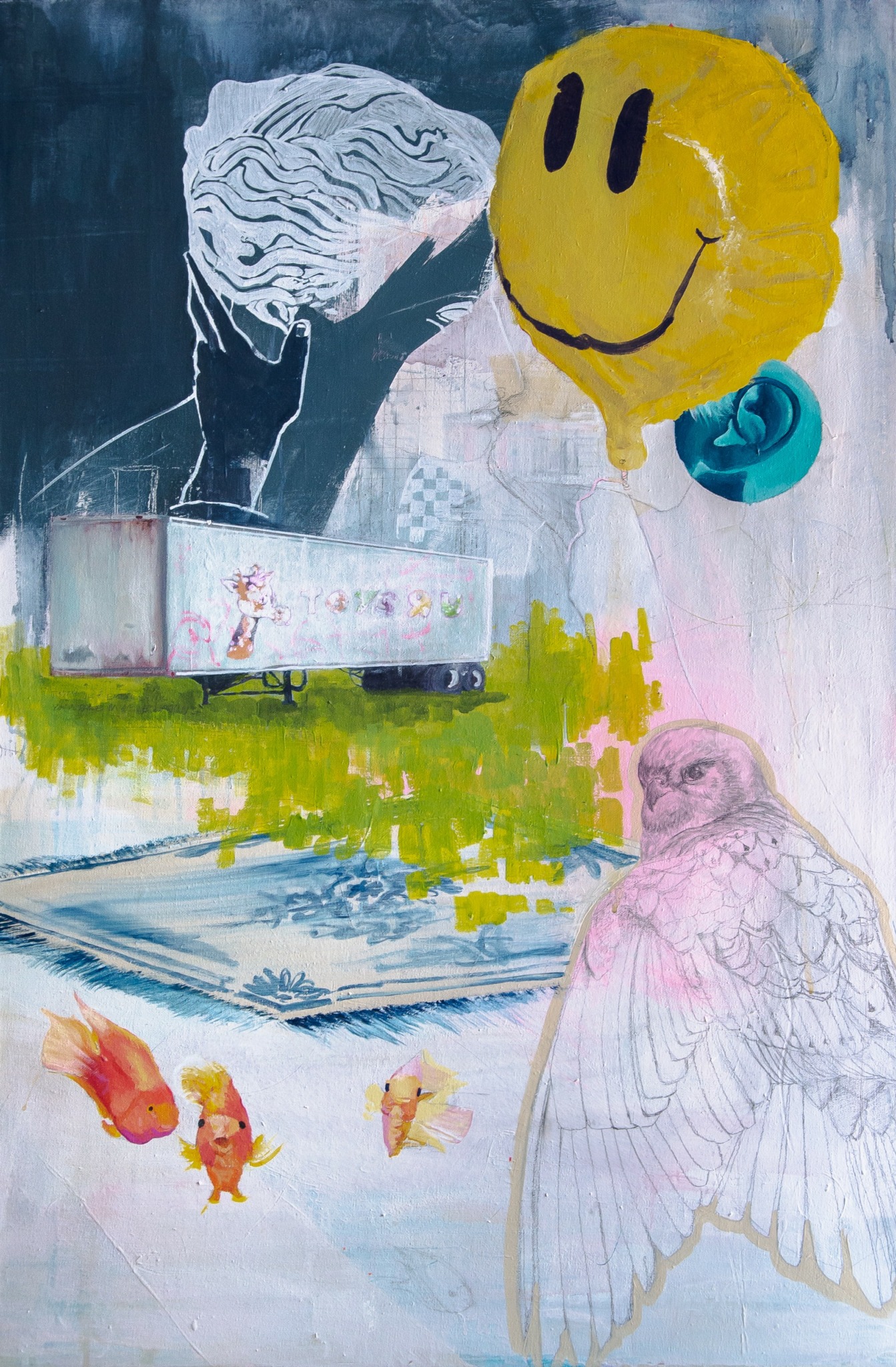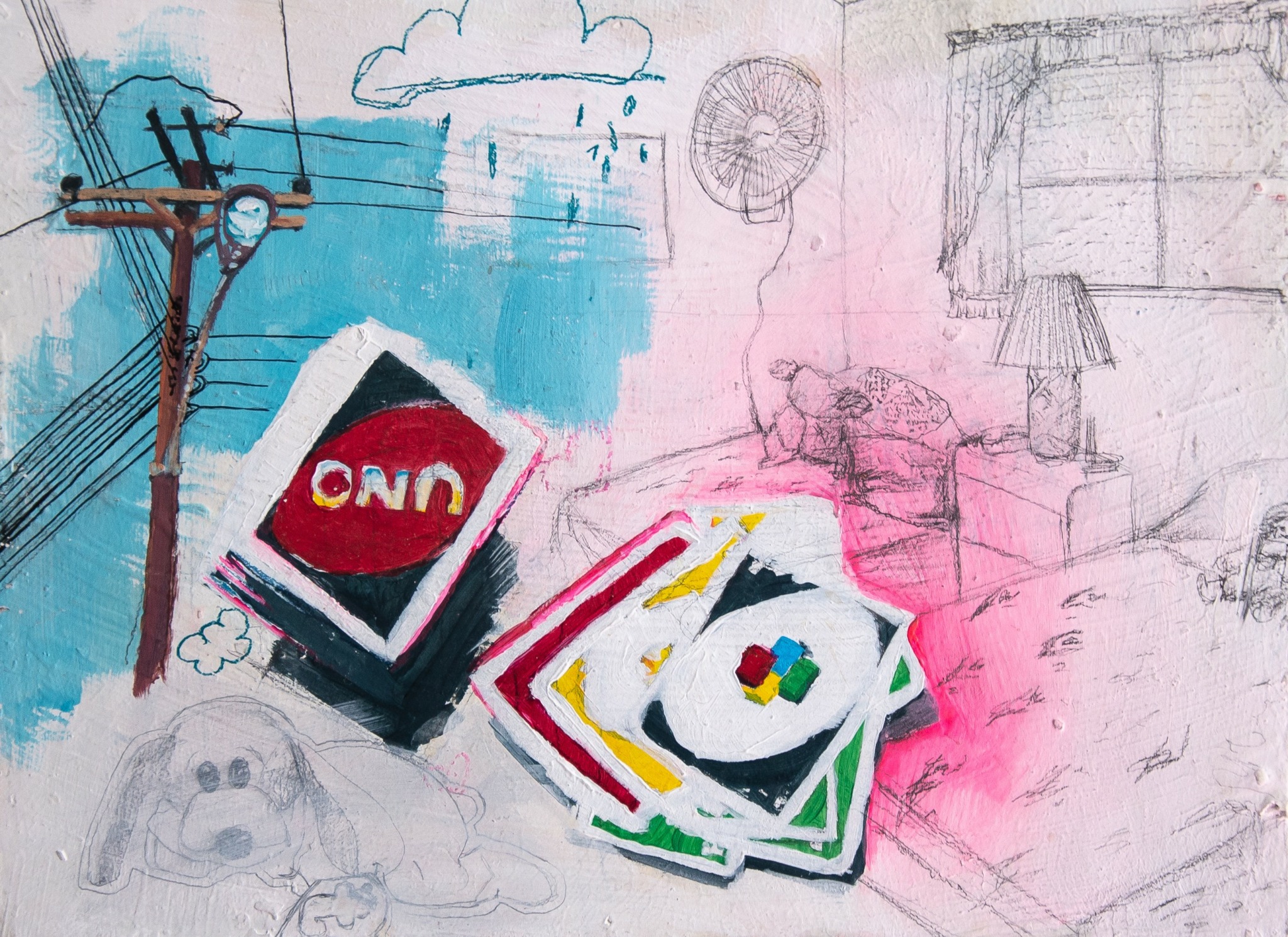We recently connected with Andrea Bacca and have shared our conversation below.
Andrea, thanks for taking the time to share your stories with us today Has your work ever been misunderstood or mischaracterized?
It’s easy to misunderstand something that doesn’t scream for your attention. Growing up, I was the quiet, overlooked kid. I was the one who sat in the back, doing everything right but never standing out. In church, it was the rebels who got noticed, the ones who wore short-shorts and needed saving. The quiet kids like me were invisible, and I learned to focus on the details others ignored. at first I wanted that, I embraced being small and invisible.
I started paying closer attention to the world around me—the things that don’t scream for attention but still carry meaning. I learned about design, and what all the invisible things in the world that someone designed for a reason. To paint an object isn’t just about capturing it; it’s about really looking at it, studying it. My work isn’t about perfection; it’s about recording the overlooked things, the clutter we now try to erase. It’s in the objects that are deemed insignificant, like toys or twisted wire. I’ve carried a sketchbook with me everywhere for over 10 years, and in that quiet act of drawing, I find calm. It’s how I focus, how I make sense of the chaos around me.
My mind is full of these forgotten memories and objects. We tend to push them to the back, thinking they’re not important, but for me, they hold everything together. That’s where my art lies—collecting the pieces that others dismiss. The beauty of what’s forgotten, what’s been pushed aside. The oddly familiar. People often want quick clarity in art, a simple narrative with a good headline. But my work isn’t about that. It’s about making space for the unappreciated, the seemingly insignificant things that make up our lives.


As always, we appreciate you sharing your insights and we’ve got a few more questions for you, but before we get to all of that can you take a minute to introduce yourself and give our readers some of your back background and context?
people don’t notice—the quiet moments, the stuff that gets overlooked or discarded. Growing up, I was that quiet kid, always a little in the background, watching and absorbing everything. I wasn’t the loud one getting attention, so I turned inward and started noticing the small details that others missed. That’s how I found art. It was a way to slow down and really see things. It felt like my way of navigating a world that often felt chaotic and out of control.
What I do is simple: I work with the bits and pieces that everyone else dismisses. I’m drawn to the imperfect, the worn, the things that are often ignored. I don’t want to paint a perfect object or an idealized version of the world—I want to give space to what’s real. To me, there’s beauty in the messiness, in what’s been forgotten or overlooked. I’ve got boxes full of bits of paper—scraps of receipts, old notes, random tickets—that I’ve collected over the years. These are the quiet things, the mundane objects that most people would throw away, but I see them differently. Each one holds a small piece of a larger story. They’re memories, moments, traces of life that get lost in the shuffle. I take those little bits of the world and turn them into something worth paying attention to.
What sets me apart is that I’m not interested in making things look perfect or polished. I want to show you what’s underneath the surface. My work is raw and real, sometimes messy, but always honest. It’s about connecting with the things that aren’t always pretty but are essential. I don’t tell a neat, tidy story. I show you fragments—pieces of memory, pieces of life—that are layered together. Maybe there isn’t a clear, singular narrative, but that’s the point. Life’s not neat, and neither is my work. Sometimes, it’s in the chaos that you find something truly beautiful.
What I’m most proud of is that I’ve stuck with this, even when it felt like the world was telling me to do things differently. I’ve learned to embrace the mess, to not shy away from the clutter in my mind and the world around me. It’s about creating something that feels real, that resonates with people. I’m proud of making art that’s more than just a picture—it’s about memory, emotion, and personal connection.
For me, it’s all about being true to myself, being raw, and letting my work speak for itself. I want people to connect with it in a way that feels personal, like it’s speaking to them. If you’re looking for art that’s going to make you pause, that’s going to make you look at the world a little differently, that’s what I’m here for.


In your view, what can society to do to best support artists, creatives and a thriving creative ecosystem?
To best support artists and creatives, society needs to make art more accessible and relatable. People love art, but many feel it’s too “out there” for them to understand. Artists should be encouraged to share the stories behind their work and provide context, helping others connect on a deeper level. By making art education more accessible—whether through conversation, resources, or experiences—we can foster a stronger appreciation for art. When people understand the “why” behind the work, they don’t just see it as something decorative, but as something meaningful that speaks to them. This kind of engagement strengthens the entire creative ecosystem.


Are there any resources you wish you knew about earlier in your creative journey?
Not really a specific resource but how to find resources I guess? find the people that make things you like. I know, it sounds like a “duh” statement, but we don’t always think of it that way. Find the art directors for your favorite movies, or the photographers behind that magazine poster you still have tucked away from back in the day when magazines actually existed. Listen to the producers of the songs you can’t get out of your head. It’s all about connecting the dots and realizing that the people creating the things you love are usually pretty easy to find if you just look.
Contact Info:
- Website: https://andreabacca.com
- Instagram: drea_bacca
- Linkedin: https://www.linkedin.com/in/andrea-bacca-694260127/




